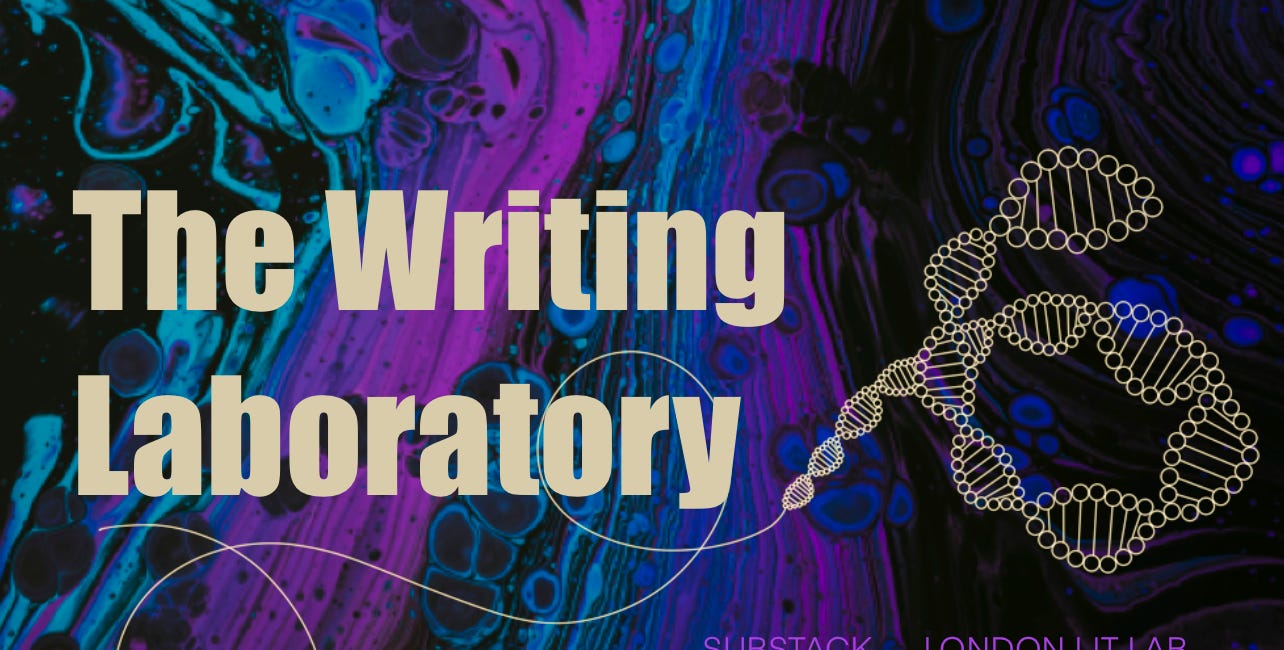Structure: are you an intuitive plotter, or do you like to have it all mapped out before you start?
This week Dr Lily Dunn wonders if every book is different.
I’ve been working on a nonfiction proposal this week. Madness, I know, just after I’ve delivered a book to my publisher. In fact, it’s not advised. I seem to have given myself a stiff neck after too much desk work, finishing Into Being, this past couple of months, and I should have had a break, but I promised an editor somewhere that I would deliver a proposal of a book I once told her about around a pub table, and it’s taken me this long to sit down and do it. What's been most challenging though is that I am trying to work out its structure before I have written it. I did this to a certain extent with the last book, although it had sprung from my doctorate, so in effect I had actually written quite a bit of it, albeit in a different form. But I have never really thought of personal narrative as being anything other than intuitive. I feel it’s a little like life, you need to live it before you can write it - a memoir you have to write before you know what you want to write about. BUT - I do like a challenge, and this proposal has certainly been that.
Because structuring before writing takes me so far out of my comfort zone I decided to pay a mentor to help me. I sent her a draft of my idea. We met and she talked me through the idea from her perspective. She gave me tips of how to do it differently. She made suggestions. I listened. I then opened a Google Doc and mapped out a chapter breakdown. ‘Do the chapter breakdown before you start writing’ she said, ‘and the writing will stem from there.’ I found this really difficult as I am too used to doing it the other way around. But I persevered, and I mapped out my chapters, and then I abandoned it and wrote the introduction, which helped me go back to the chapters with renewed strength and conviction. She was right, though. mapping out the stucture really helped me work out what it was that I wanted to write about. I now have eight or ten chapters with things inside them, and actually - give me some time and some money – for the first time I can see this thing turning into a book!
Let’s face it, some of us are good at mapping out - some of us have that kind of brain - and some of us just aren’t really like that. Some of us just like to feel out way in the dark. Well, maybe ‘like’ is too strong a word. Maybe it’s all that we really know. Maybe it’s just about staying in that comfort zone. I am open to working in a different way and what I realise, how ever painful it might be, working this way - working out the structure first - probably knocks about a year off the process.
We’ve got one of our favourite courses coming up, starting next week - How to Plot a Page-Turner – which is the perfect course for any of you writing a novel and struggling over structure, because Anna Freeman who is a writer of historical fiction, is a genius at pulling a book together. Her specialism – the thing that gets her really excited – is helping people make their book into a book that will compel a reader to keep turning the pages. The course looks closely at your narrative structure, narrative arc, and how to build suspense, with fantastic transferrable skills. It is designed also to fit around other work commitments, and you can pay in instalments. Please get in touch.
We’ve also got some courses coming up in March, both run by Zoe Gilbert. Folk Tales in New Fiction starts on 13th March, and will look closely at other writers use of folk tales in their own literature, whether they use the skeleton structures of folk tale plots or use them to launch off into their own perceived structure. Craft Lab, which is a discussion-based course focuses on the five key areas of craft, and also includes a session dedicated to analysing plot and structure of particular short stories - asking the following questions:
Where does each story start and end, and why does this matter?
How does the opening work, and what sort of ending are we offered?
Where are the big ‘beats’, or shifts, or surprises, and what effect do they create?
Are gaps left, or actions implied rather than shown? Is there resolution of any kind?
For more details of our courses you can look at our calendar here, or go to our website:





